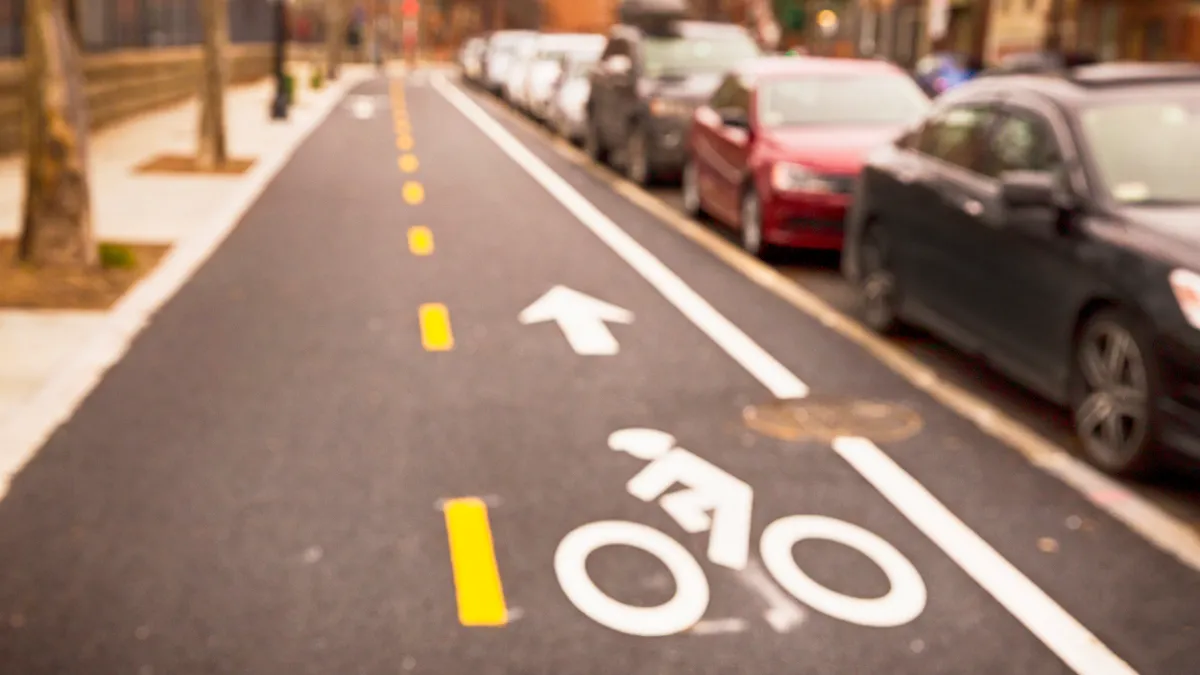Dive Brief:
- The construction of the Interstate Highway System divided and often demolished communities of color, according to a new report from Smart Growth America.
- The report, “Divided by Design,” contends that current federal and state programs to redress the historic inequities created by a car-centric transportation system aren’t sufficient to correct fundamental problems.
- “We’ve got a ton of safety projects,” said Beth Osborne, director of Transportation for America, a Smart Growth America arm. “But it hasn’t improved safety; our safety outcomes are worse than ever.”
Dive Insight:
Despite initiatives like Complete Streets, Vision Zero and Safe Streets and Roads for All, traffic fatalities continue to rise. Almost 43,000 people lost their lives in motor vehicle accidents in 2022, including more than 7,500 pedestrians.
Osborne tells policymakers, “You really need to look at how your program operates and how the people who are charged with implementing them are governed, held accountable and instructed.”
Continuing with the same general approach to transportation will only perpetuate and exacerbate these problems, the report says. Black pedestrians are twice as likely to die in traffic crashes than White pedestrians, according to Smart Growth America. Car-oriented development disadvantages those without access to a vehicle or who are unable to drive, the report says, and leads to health consequences from vehicle emissions.
The report makes four recommendations, including:
- State transportation departments should measure access to everyday needs, and transportation agencies should account for transit’s ability to serve marginalized communities.
- State and local governments should focus on reconnecting divided communities, taking advantage of the federal Reconnecting Communities program and other federal funds. But, the report says that continuing to build and expand highways just perpetuates the inequities “while generally inducing more traffic.”
- The U.S. Department of Transportation should revise its guidance and update its models to distinguish between roadways designed for fast movement, such as interstate highways, and roads in developed areas where lower speeds are needed.
- Transportation and land use should be considered together to create “the most effective, efficient, and equitable results.”
“This report is for those elected officials that are talking about equity, but don’t get that the program is not designed to deliver those results, no matter how much money you put into it,” Osborne told Smart Cities Dive. “What I’d like to have happen is for more people to engage on these issues, which are often seen as nerdy technical issues and not worth the consideration of broad policymakers. I want them to engage in these issues because they are the policy.”













